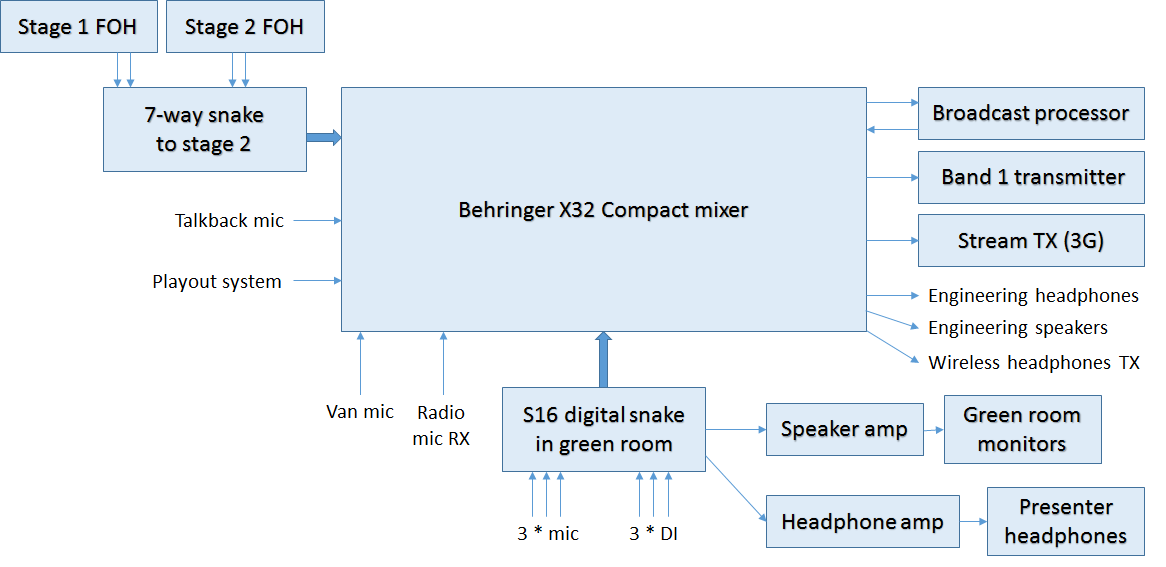

This bank holiday weekend, Cambridge 105 broadcast live from the Homegrown music festival in Barrow, Suffolk. We bought sets live from the two stages, as well as interviews and live acoustics sets from a backstage green room area.
Jon Watts has published some fantastic photos of the weekend if you want to see what it's like from the point of view of an audience member, but this is a look at the behind-the-scenes engineering.
At the highest level, it's a simple problem: you need some set of sources (microphones, music sources, feeds from stages), a way of mixing them together, and some way of getting the output back to the studio in the centre of Cambridge. However, the reality looks more like this:

By using a digital mixer like the X32, a lot of routing that would previously been complex is made easy. For example:
Talkback was particularly important for this setup: we engineered the show from our outside broadcast van, but the presenters and acoustic performers were in a green room area, out of sight. We needed to be able to cue presenters when the main stages (also out of sight) were about to start, stop, go into new tracks and so on, all while the presenters were live on air.
As well as getting the engineering of this right, it's a real skill for the presenters to be able to keep going while having a voice in their ear talking at them - all credit to Neil and Julian for doing this so well!
Along with the digital mixer comes digital snakes or multi-cores. The S16 allows us to have 16 inputs and 8 outputs remote from the mixer using only a single Cat5E cable - much lighter and easier to handle than a conventional snake.
Finally, we have to get the signal back to the studio. Barrow is much further away from the studio than most of our outside broadcasts, so this demanded a new approach. We used a combination of an IP stream from a laptop in the OB van over 3G and a band 1 (~53MHz FM) link back to a remote receive site where it then hit a separate IP stream. The 3G stream was our primary feed, but automatically fell back to the band 1-fed stream in case it dropped. In the event, 3G held up remarkably well, but it's dangerous to rely on it as the only option, particularly at a festival where a much larger than normal collection of people suddenly turn up in a rural area with their mobile devices.
comments powered by Disqus